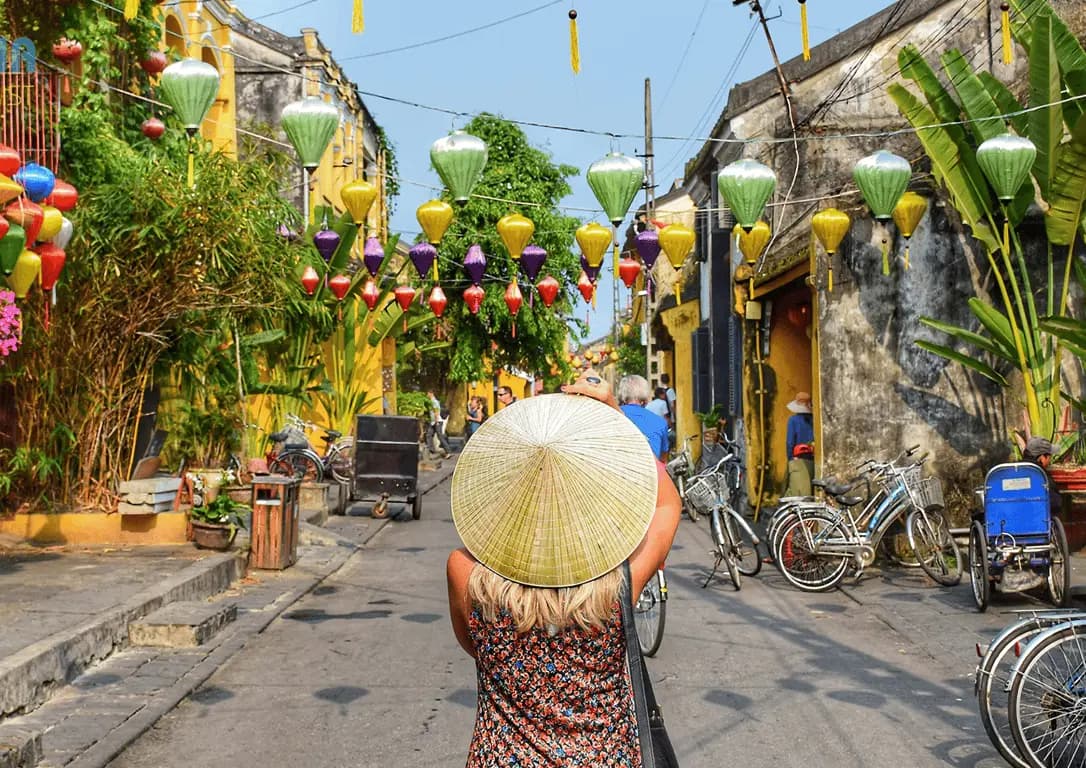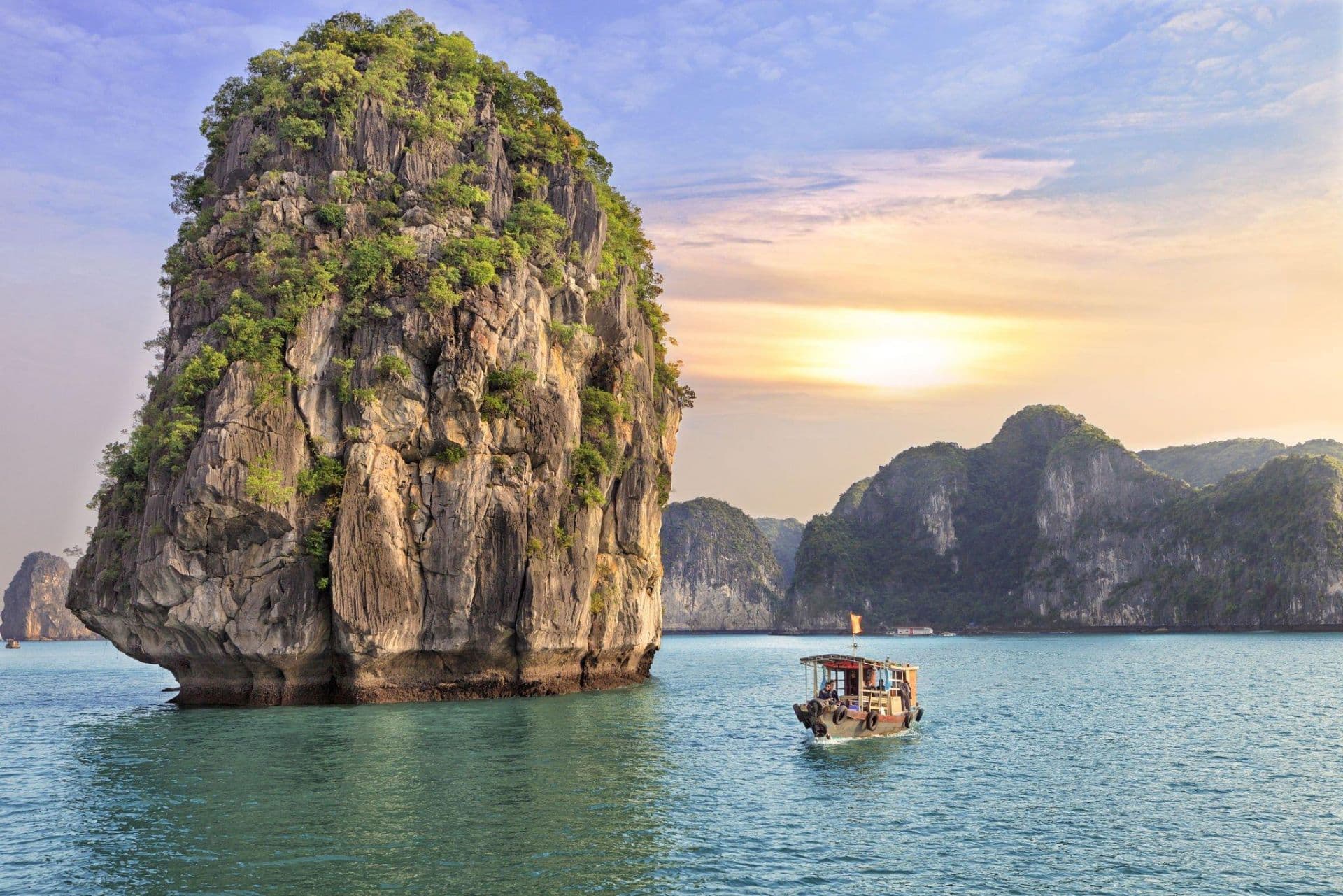Vietnam is a captivating country with a rich cultural heritage, breathtaking landscapes, and mouthwatering cuisine. Whether you’re trekking through the rice terraces in Sapa, cruising in Ha Long Bay, or motorbiking the winding roads of the Hai Van Pass, Vietnam promises an unforgettable adventure. However, to make the most of your trip, it’s essential to plan ahead. In this comprehensive guide, we’ll explore what to prepare when traveling to Vietnam to ensure a smooth, safe, and enjoyable journey.

What to Prepare When Traveling to Vietnam: The Ultimate Travel Checklist
Valid Passport and Visa Requirements
Before booking your flight, check your passport. Make sure it’s valid for at least six months beyond your planned return date. This is a strict entry requirement for Vietnam.
Visa Options
Vietnam offers several visa options depending on your nationality:
-
E-visa: Available for over 80 countries. Apply online through the official Vietnamese government website. Processing takes about 3-5 business days.
-
Visa on Arrival (VOA): Only available if entering via international airports (Hanoi, Da Nang, Ho Chi Minh City). You must apply for a pre-approval letter online before traveling.
-
Visa exemption: Citizens from countries like Japan, South Korea, some EU nations, and ASEAN members may enjoy visa-free entry for a limited time.
Always verify the latest visa policies as they change periodically.

Valid Passport and Visa Requirements
Vaccinations and Health Precautions
When traveling to Vietnam, it’s recommended to be up to date with routine vaccinations. The Centers for Disease Control and Prevention (CDC) suggests the following for most travelers:
-
Hepatitis A and B
-
Typhoid
-
Tetanus and Diphtheria
-
Japanese Encephalitis (if staying long-term or visiting rural areas)
-
Rabies (especially if you plan outdoor activities or visiting animal rescue centers)
It’s also wise to bring a basic medical kit, including:
-
Pain relievers (paracetamol, ibuprofen)
-
Anti-diarrheal medication
-
Rehydration salts
-
Insect repellent with DEET
-
Sunscreen and after-sun lotion
-
Antiseptic cream and band-aids
Currency and Payment Methods
The official currency in Vietnam is the Vietnamese Dong (VND). As of 2025, 1 USD is approximately 25,000 VND, but rates may fluctuate. Prepare by:
-
Exchanging a small amount of cash at the airport for immediate needs.
-
Using ATMs, which are widely available in cities and towns. However, be aware of withdrawal limits and fees.
-
Carrying USD or EUR as backup currency. Major banks and exchange counters accept them.
-
Downloading e-wallet apps such as MoMo or ZaloPay if you plan to stay long-term.
Credit cards are accepted in hotels, malls, and tourist hotspots, but cash is king in rural areas and local eateries.

Currency and Payment Methods
Language Basics and Communication
Vietnamese is the official language, and English is not widely spoken outside urban centers. Learning a few basic Vietnamese phrases can significantly enhance your experience:
-
Xin chào (Hello)
-
Cảm ơn (Thank you)
-
Bao nhiêu tiền? (How much is it?)
-
Tôi không hiểu (I don’t understand)
-
Nhà vệ sinh ở đâu? (Where is the restroom?)
Also consider:
-
Translation apps: Google Translate works well and supports camera translation.
-
SIM card or eSIM: Buy a local SIM at the airport (Viettel, Vinaphone, or Mobifone are reliable). Most packages include generous data plans at affordable prices.
Appropriate Clothing and Packing Tips
Vietnam stretches over 1,000 miles north to south, meaning its climate varies dramatically by region and season.
General Packing Guide
-
Lightweight, breathable clothing: Perfect for hot, humid weather.
-
Rain jacket or poncho: Essential during the rainy season (May to October in the south, August to January in the north).
-
Warm clothes: If visiting the northern mountains (e.g., Sapa) in winter (December–February).
-
Swimwear: For beaches in Da Nang, Phu Quoc, or Nha Trang.
-
Comfortable walking shoes: Ideal for city exploration and hikes.
-
Sandals or flip-flops: Convenient for beaches or casual strolls.
Don’t forget:
-
Power adapter (Vietnam uses types A, C, and D plugs, 220V)
-
Sunglasses and hat
-
Travel towel
-
Waterproof bag for valuables

Appropriate Clothing and Packing Tips
Travel Insurance: A Must-Have
One of the most important things to prepare when traveling to Vietnam is travel insurance. Medical emergencies, lost baggage, or trip cancellations can happen anywhere. A good insurance policy should cover:
-
Emergency medical treatment
-
Evacuation and repatriation
-
Trip cancellation or interruption
-
Lost or stolen belongings
-
COVID-19 coverage (still a requirement for some areas or accommodations)
Always read the fine print and carry a digital and hard copy of your insurance policy.
Cultural Etiquette and Social Norms
Understanding local customs shows respect and helps you avoid unintentional offense.
Do’s:
-
Remove shoes before entering homes or some temples.
-
Dress modestly when visiting religious sites.
-
Use both hands when giving or receiving items, especially from elders.
-
Bargain politely at markets—it’s expected.
Don’ts:
-
Don’t touch anyone’s head, especially children.
-
Don’t point with your index finger; use your whole hand.
-
Don’t lose your temper in public—it’s frowned upon.
-
Don’t photograph people without permission.
Vietnamese people are generally friendly and forgiving of cultural mistakes, but a little effort goes a long way.
Transportation Tips
Vietnam’s transportation can be chaotic but also part of the adventure.
-
Motorbike: A popular and convenient way to explore. If you’re confident, rent one, but always wear a helmet and have an international driver’s permit.
-
Grab app: A must-have for booking motorbike taxis, car rides, and even food delivery.
-
Public buses and trains: Budget-friendly but slower. Great for long distances (e.g., Hanoi to Da Nang).
-
Domestic flights: Vietnam Airlines, VietJet Air, and Bamboo Airways offer competitive fares and connect major cities.
For safety, avoid night buses unless you’re familiar with the route or traveling with a group.
Internet and Connectivity
Vietnam offers excellent internet coverage in cities and towns. Most hotels, cafes, and restaurants offer free Wi-Fi. However, for consistent access:
-
Buy a local SIM card or eSIM at the airport.
-
Use VPNs if you want added privacy and access to region-locked services.
-
Consider portable Wi-Fi if traveling in a group.
Food Safety and Water Concerns
Vietnamese street food is delicious, but safety comes first.
-
Eat at busy stalls with high turnover.
-
Avoid raw vegetables unless washed with clean water.
-
Peel fruits before eating.
-
Drink bottled or filtered water only. Avoid ice unless it’s from purified water.
-
Carry hand sanitizer and wet wipes.
If you have dietary restrictions, learn the Vietnamese terms or carry a card with your needs translated.

Food Safety and Water Concerns
Sustainable Travel Practices
Be a responsible traveler by minimizing your environmental and cultural impact.
-
Avoid single-use plastics; bring your own reusable bottle and bags.
-
Respect wildlife—avoid purchasing products made from endangered animals.
-
Support local businesses by buying from artisans and eating at family-owned eateries.
-
Don’t give money or candy to children—it can encourage begging.
Vietnam’s beauty is best preserved when we travel consciously.
Knowing what to prepare when traveling to Vietnam will make your journey smoother and more enjoyable. From visa requirements to clothing tips, cultural etiquette to travel safety, a little preparation goes a long way.
Vietnam is a land of contrasts—ancient and modern, chaotic and serene, traditional yet vibrant. By equipping yourself with the right tools, knowledge, and attitude, you’ll open the door to unforgettable memories and life-changing experiences.
